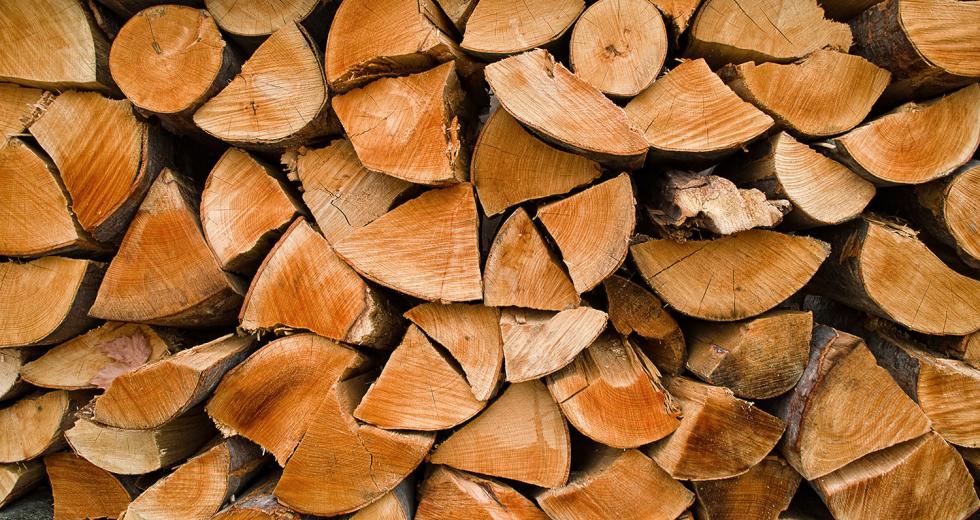If you live in Northern California, chances are you have experienced quite a few hazy days this summer — most likely caused by smoke from a nearby wildfire. As a result of the ongoing drought and insect infestation, much of California’s forestland is vulnerable to devastating fires — posing a growing threat to homes, wildlife habitat and watersheds as they burn hotter and faster than ever before.
The excess woody biomass that has built up in California forests over the years only increases the threat of catastrophic wildfires. But investing in a stable biomass energy sector can reduce smoke and wildfires, and improve the health of our forests and watersheds while also helping to meet our state’s growing green energy needs.
Woody biomass includes limbs, tops, needles, leaves and other woody parts of trees that are thinned from overly dense and unhealthy forests with high fire risk, then gathered from the forest floor and moved to a biomass power plant. The power plant uses biomass as a fuel to generate steam which is then used to create biomass energy.
Removing excess biomass through forest management and restoration activities improves forest health, promotes tree growth and can increase carbon capture, while preventing forest-loss due to wildfire, insects and disease. In fact, according to a biomass energy study prepared by the USDA Forest Service Pacific Southwest Research Station, the removal of excess biomass reduced greenhouse gases by 65 percent due to reduced fire severity and increased biomass energy generation.
Biomass energy continuously recycles carbon absorbed by trees from the atmosphere via photosynthesis, which is in turn recycled back into wood fiber from the atmosphere. A life-cycle analysis of greenhouse gas emissions for wood-derived energy demonstrates the climate superiority of wood vs. coal, gas and oil. That is the reason the EPA, USDA and United Nations Intergovernmental Panel on Climate Change recognize the important climate benefits of biomass energy.
Despite the many environmental and community benefits of biomass energy, facilities throughout Northern California have struggled to stay open. California has lost five biomass facilities in the last 18 months, in part because of the high cost of removing woody biomass from the forest relative to electricity pricing.
Related: Big Bad Biomass
Although generating energy with fossil fuels is cheaper than biomass energy, failing to support biomass has serious environmental and health costs. Because of the lack of investment in biomass energy facilities, biomass is being open-burned or left in the forest, creating the potential for catastrophic wildfires.
Smoke from these wildfires produces millions of tons of fine particulate matter (PM2.5), which can cause serious health problems including lung disease, asthma attacks and an increased risk of heart attack and stroke. According to the EPA, about one in every three people is at high risk for experiencing PM2.5-related health problems. Moreover, catastrophic wildfires release millions of tons of carbon dioxide into the atmosphere, a major cause of global climate change. The Rim Fire, for example, emitted approximately 30 million tons of carbon dioxide, equivalent to the annual emissions from 5 million cars.
Fortunately, state and federal leaders are increasingly aware of and focused on the benefits of California’s biomass industry, and their attention is having an impact locally. Through the USDA, for example, 13 biomass facilities in California — including one in Lincoln — will receive a portion of $11.5 million in federal funds in the Biomass Crop Assistance Program. BCAP provides financial assistance for biomass deliveries to a BCAP-qualified energy facility. Providing federal assistance helps relieve the financial burden that currently prohibits biomass from being transported to these facilities.
In Plumas County, there is progress toward constructing a new biomass boiler to power and heat a building at the Feather River College thanks to an Energy Commission grant of $2.6 million to the Sierra Institute for Community and Environment. These boilers can burn biomass fuels to create both electricity and heat, and this type of system will be the first of its kind installed in California. The Sierra Institute estimates the county will save $40,000 to $45,000 annually in electric bills from the energy produced by the new boiler system.
Placer County is developing an approach to finance and install a new small-scale combined heat and power facility at the Cabin Creek site in eastern Placer County. This facility will utilize technology that is powered entirely by woody biomass. The facility will generate electricity 24/7 for distribution in eastern Placer County.
Clearly, there is growing momentum to build a strong, sustainable biomass energy infrastructure in California — great news for our environment and our forests. But in the meantime, many facilities are struggling to survive, and changes are needed to guarantee a stable future for this important green energy industry.
Stabilizing the biomass energy sector is one of the most important steps California can take to improve the environment and grow our clean energy resources. We need a level playing field for all renewable technologies — one that recognizes that a stable biomass energy sector can bring additional benefits, such as improving forest health and helping to prevent devastating wildfires. Recognizing the monetary value of biomass energy’s environmental benefits will allow biomass to compete better in the market and win important long-term energy contracts.
In considering the future of our state’s green energy, I urge our state leaders to remember that the cost of failing to support this important sector — including the skyrocketing costs and impacts of catastrophic wildfires — far outweigh the costs of leveling the playing field. After all, for California, an investment in biomass energy is an investment in saving and restoring our forests.



